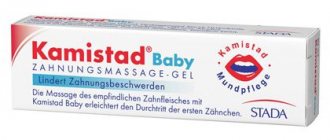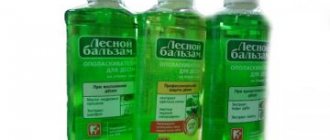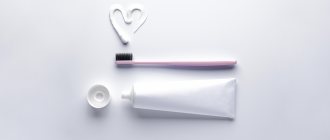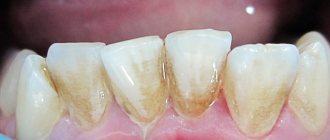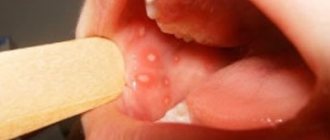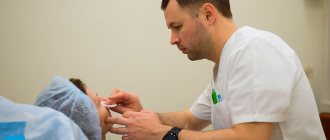How honey affects your oral health
Both tooth erosion and caries occur as a result of demineralization of the hard tissues of the tooth. But these conditions have different etiologies. Erosion is the result of a chemical process without the participation of bacteria, while the metabolic products of bacteria cause caries (tooth decay).
Previously, fluoride dentifrices and solutions, antibacterial mouth rinses, and antibiotics were primarily used to treat gingivitis and enamel demineralization. Recently, in Western practice, much attention has been paid to natural products that promote health.
Historically, honey has been used as an environmentally friendly medicine for many years in the treatment of burns, infected wounds, peptic ulcers, bacterial gastroenteritis and eye infections. In addition, honey has powerful broad-spectrum antibacterial activity.
Scientists have conducted numerous studies to determine whether honey causes erosion, and whether the composition of saliva changes under the influence of honey components, especially propolis, which is known to have a protective effect against dental erosion and the adhesion of early bacterial colonizers.
The effect of honey on pH
Significant differences in pH were observed in the honey and sucrose groups compared to the pH observed in the sorbitol group (p ≤ 0.001). The maximum drop in pH was observed after 5 minutes in both the honey and sucrose groups; however, the pH in the honey group recovered quickly within 10–20 minutes of exposure and did not fall below the critical decalcification pH of 5.5. On the other hand, pH after sucrose exposure fell <5.5 and was associated with a 30-minute recovery time. The pH observed for the sorbitol group did not change over time. Bacterial counts were significantly reduced in the honey group compared to the other treatment groups (p ⩽ 0.001), and honey significantly inhibited the growth of all strains tested compared with the inhibition observed with antibiotics (p ⩽ 0.001).
Results of studies on the antimicrobial properties of honey
In vitro studies have shown that exposure to a honey solution affects the activity of monocytes. Mouthwash containing propolis (present in bee products) has been found to have antimicrobial activity against Streptococcus mutans and can be used as an alternative treatment in preventing dental caries and reducing plaque accumulation and polysaccharide formation.
It was recently reported that periodontal pockets irrigated with a 10% propolis solution showed a 95% reduction in gingivitis. This suggests (based on both clinical and microbiological parameters) that subgingival irrigation with propolis extract as an adjunct to periodontal treatment is highly effective.
Topical application of propolis extract to oral Candida albicans infections resulted in remission within three weeks, and treatment efficacy was comparable to treatment with nystatin, the standard antifungal drug used to treat these infections.
Another study conducted on premolars for direct pulp capping also found that propolis was as effective as calcium hydroxide. Based on these observations, it was concluded that propolis could be used in conjunction with calcium hydroxide as an intracanal treatment.
A study conducted on bacterial isolates obtained from patients found that honey was a more effective antibacterial agent than some of the common antibiotics tested. This also suggests that honey may inhibit plaque formation and help fight gingivitis.
The benefits of honey
The composition of the bee product is rich in useful components. The vast majority of them are calcium. It is this component that is responsible for the strength of bones.
The phosphorus contained is suitable for whitening, and fluoride is the main protective agent against the destruction of hard dental tissues.
This product is also not deprived of useful vitamins:
- vitamin A. It is necessary for smooth tooth enamel and also helps eliminate bleeding gums.
- vitamin D. It helps absorb calcium and phosphorus.
- vitamin C. It is necessary for bone regeneration.
Benefits of comb honey for teeth
Honey is especially beneficial when consumed in honeycombs. Honeycomb is a natural honey package that includes a wide range of vitamins and natural antibiotics. When consuming honey along with honeycombs, wax and propolis also enter your body - the most valuable beekeeping products, which, among other things, have a beneficial effect on teeth. With regular chewing of honeycombs, the wax cleans not only the teeth, but also the tongue and gums. For gum diseases, comb honey is extremely useful, since the wax gently massages the gums, and honey has a healing effect on small wounds and cracks that cannot be seen with the naked eye, but which will nevertheless bother you. Honey also has disinfectant properties necessary for such diseases. Thanks to wax, blood circulation in the gums improves, due to which the tissues that hold the teeth become stronger, and, consequently, the teeth become stronger.
As for the propolis contained in comb honey, back in 1953 it began to be used in dental practice to anesthetize the hard tissues of teeth and soft tissues of the oral cavity. Propolis is an excellent remedy for local anesthesia. P.I. Prokopovich noted that in terms of its anesthetic properties, this product is 52 times superior to novocaine and 3.5 times superior to cocaine. Therefore, if you have a toothache, just chew honeycomb honey for a while, trying to keep it in your mouth longer, and the pain will begin to subside.
How to protect your teeth?
To protect your mouth from dental diseases, you need to consume honey correctly. We bring to your attention a few rules:
- You should brush your teeth several times a day - morning and evening.
- After each meal, it is advisable to rinse your mouth with warm water.
- Throughout the day, you need to drink enough water so that saliva constantly washes the surface of the enamel.
- Your toothbrush needs to be changed every 3 months, otherwise bacteria will accumulate on the bristles.
How does caries occur?
In advertising, caries disease is portrayed as certain bacteria that settle on the surface of the tooth and destroy it. This looks like reality.
Pathogenic microorganisms that come from the outside or are contained in the natural microflora of a person begin to multiply in a favorable environment where all the conditions are created:
- change in acid-base balance;
- acceptable temperature;
- humid environment.
Let's add here the activation of carbohydrate fermentation processes after eating. All this leads to the production of large amounts of organic acids, which attack tooth enamel and cause caries.
The main circumstances that lead to the occurrence of carious lesions include:
- lack of hygiene;
- improper oral care;
- predominantly unbalanced diet;
- diseases of the gastrointestinal tract, both chronic and periods of exacerbation;
- decrease in the level of essential vitamins and microelements in the body;
- genetic predisposition
Hard plaque of bacteria
And if the problems listed above can be solved by adjusting nutrition and improving hygiene procedures, then you will have to fight the streptococcus bacillus.
The fact is that streptococcus is present in two states of aggregation: soft - in this case it will be easy to remove with a regular brush or dental floss, and hard.
The hard condition occurs due to an increase in the number of bacteria, their mineralization, resulting in the appearance of tartar, which cannot be removed at home.
Therefore, it is a good idea to undergo a hygienic professional cleaning procedure at a dental clinic to prevent caries.
A balanced diet is everything
You can use one rule - don't eat sweets. However, harmful carbohydrates, which lead to fermentation and the production of organic acids, are found not only in “delicious” foods. This includes any baked goods (including bread), added sugars (for example, in sauces and canned food), starchy foods (potatoes, carrots, tomatoes).
But this does not mean that you need to limit yourself in everything so that caries does not have a single chance. It is enough to add such foods to your diet in moderation; be sure to counterbalance them with whole grain cereals and green vegetables and fruits.
In addition, with age, the surface of the enamel becomes thinner and becomes more susceptible to what we eat every day.
Elemental composition of the body
A factor that is closely related to nutrition. If it is not balanced, most likely the body will not receive enough microelements necessary for the correct functioning of the body.
For example, calcium, phosphorus and fluoride are microelements that reduce the risk of dental caries. They are found in seeds, cottage cheese products, fatty cheese, canned red beans and some cereals.
Note! A diet enriched with microelements will not help if there is a genetic predisposition to demineralization, and “vitaminosis” can be observed during pregnancy - when the fetus “eats” the mother’s teeth, accumulating calcium, necessary for the proper development of the skeletal system. But this just means that in such cases you need to be even more responsible about your diet.
The work of the salivary glands
Water balance in the body has an interesting effect. It affects the full functioning of the salivary glands, which must secrete a sufficient amount of secretion to remove food debris and prevent the decomposition of bacteria.
Does your mouth often dry out? Try increasing the amount of water you consume, or analyze your diet - perhaps there is too much sweet or salty in your menu. Adjust this and let your saliva do its work.
Genetics and pathologies
Any disruptions in the body's natural metabolism - diabetes, gastrointestinal diseases (gastritis, ulcers) and hormonal imbalance - have an impact.
In these cases, even with a varied diet, beneficial components may not be absorbed well enough and vitamin starvation still occurs.
What are caries?
Diagnosis of caries involves dividing the disease depending on several factors: symptoms, source of occurrence, and so on. Let's consider the most understandable ones for the average patient without special medical education.
Areas of distribution
Everything is quite clear here:
- single - a carious cavity is localized on one tooth, begins with a harmless spot on the enamel, is not accompanied by pain until it goes deeper
- systemic (or multiple) - develops very quickly, affects several units in a row, has a depressing effect on the immune system.
According to the flow and emerging consequences:
- without complications - no special violations have been identified, dental intervention will not lead to a negative outcome;
- complicated - at the diagnostic stage, including studying an x-ray and opening the affected cavity, a violation of the internal tissues, pulpitis and periodontitis were revealed.
Stages of caries
This classification is most often found in the vocabulary of dentists, as it is used to describe the level of development of carious disease.
Let us arrange them in order of increasing complexity of treatment and the level of consequences of surgical intervention:
- darkening of the enamel or stain - accompanied by a change in the uniform color of the surface in the form of a small whitish or gray spot or stripe. At this stage, the patient does not experience pain, and if the pathology is invisible to the eye, the person himself will not notice it;
- initial superficial lesion - a small, almost imperceptible hole of a dark shade appears in place of the spot, which grows over time. The tooth reacts to temperature changes, drinking too hot or too cold drinks and foods;
- medium caries - the disease affects dentin - the part that is located directly under the enamel layer, so the pain is no longer periodic, but permanent, and the quality of life decreases;
- deep caries is a diagnosis that requires urgent intervention and treatment, as the pulp (nerve endings) is affected. Most likely, you will have to perform depulpation - in fact, depriving the tooth of nerve endings, which means that the tooth will be less protected from mechanical influences from the outside. Moreover, a tooth with advanced pulpitis must be removed and replaced with an implant or crown.
Separately, you can take out a type that differs in localization directly on the tooth. That is, the process usually begins from the affected edge of the tooth, or from the center.
However, if there is the presence of tartar, which in turn provokes bleeding gums, an increase in the colony of pathogenic bacteria and accelerated development of gingival lesions, then cervical caries occurs. It is located right next to the gums, where the most mineralized residues are found.
Diagnostic methods
Regardless of the severity of the pain, you should immediately consult a doctor at the first suspicion. You need to choose a dental clinic where they will conduct a full diagnosis and staging of the disease.
The main ways to determine the level of “neglect” of the oral cavity include:
- visual check - using a mirror and probe
Additional Information. Find out from the administrator or on available resources on the Internet whether the clinic uses microscopes in its work - a doctor with special microscope glasses will see more minute changes in the enamel than one who uses his own vision, no matter how sharp it is.
- digital images (this can be a regular X-ray, or a full-fledged computed tomography or popular 3D recognition);
- functional study;
- thermal testing
A high-quality diagnosis will give the doctor an understanding of how to treat caries in order to avoid the unpleasant results of untreated pathology, which affects the pulp under the filling and brings even more problems.
How to get rid of carious disease
The type of therapy directly depends on the stage of the disease.
In case of minor damage, conservative intervention is performed without preparation (drilling, cutting the gums or interfering with dentin and pulp):
- Visual diagnostics;
- Isolation of the tooth from the gingival fluid
- Gently cleans the surface from dark spots;
- Application of a mineralizing composition that will prevent re-injury, for example, with the Icon system
The mineralization composition will stop the spread of caries if all actions are performed accurately.
Traditional drill
If the pathology has turned into holes and with all subsequent deteriorations, they resort to the only method of treatment - mechanical exclusion of the affected areas using a drill or, simply, a drill.
This process is considered a surgical intervention and, if necessary and a low pain threshold, treatment of caries is carried out using anesthetics:
- Pain relief (if necessary, if the affected area is shallow, the patient may refuse the injection);
- Isolation of tooth with rubber dam.
- Mechanical cleaning of carious and softened tooth tissues - drilling;
- Application of medications to remove bacteria and prevent the formation of new caries;
- Complete repetition of the anatomical shape of the tooth;
- Polishing the filling.
If caries turns into pulpitis, this will complicate tooth treatment. Under anesthesia, it will be necessary to remove the nerve and seal the tooth canals with an inert substance. Otherwise, the inflammation will go further into the bone, into the jaw, into the blood, which can lead to very serious consequences, including tooth extraction and hospitalization.
Do not be afraid of the depulpation process. With enough attention and care, the tooth will function just like other teeth with nerves. The main thing is to cover such a tooth with a crown.
Caries in children
Dental problems are not limited to adults only. Kids are not yet used to or have not learned to pay enough attention to hygiene, and some really love sweets.All this leads to caries disease on temporary milk teeth. But do not take their temporary nature as a reason not to treat milk caries.
Damage to the milk row can lead to the same complications in the form of pulpitis and periodontitis, and you will have to resort to real general operating anesthesia to cure fidgety teeth.
In addition, deep caries can affect the formation of permanent dentition, so a preventive examination by a dentist is required for children once every six months.
Prevention is the key to health
This applies to both adults and children:
- maintain regular oral hygiene - brush your teeth twice a day with a toothpaste enriched with fluoride and calcium, use dental floss and brushes, mouth rinses, and if you cannot use a toothbrush, take chewing gum;
- Supplement your daily care with an appointment with a dental hygienist at least once a year to get rid of tartar;
- maintain a sleep schedule, diversify your diet, drink more water and engage in physical activity.
It is always easier to prevent a disease than to suffer from pain and then spend money and time on treatment in professional dentistry.
Rules for using honey for teeth
The benefits of honey for dental treatment have been proven by scientific medicine. To get the maximum benefit from the product, you must follow a number of simple rules:
- Do not allow honey to become too hot;
- It is not recommended to keep the honey product in direct sunlight.
- For storage it is best to use a dry and dark place. The ideal storage temperature is 5 to 10 degrees above zero.
- The dishes should be either wooden or glass.
- You should also avoid contact with metal.
For toothache
If a person has a severe toothache, then you can take honey and cinnamon in equal proportions, grind the mixture and apply it to the sore spot.
For fungal infections of the oral cavity, it is necessary to prepare a special “honey solution”; to prepare it, you need to take 100 grams of honey and 50 ml of water and put it on fire, and you must not forget to collect the foam. You should also add 50 grams of rose petals there. They should first be soaked in sugar water, boiled for another hour over low heat, removed and strained. This remedy helps with stomatitis, just store it in the refrigerator. In addition, this solution will also help with sore throat.
Medicinal chamomile has an antiseptic, antispasmodic, and anti-inflammatory effect. To prepare the solution you need to take 3 tbsp. l. chamomile flowers and 0.5 liters of boiling water. Pour water over the flowers and place in a water bath for 15 minutes. Afterwards you need to strain, cool and add a few tbsp. l. honey.
The effect of vitamin deficiency on the condition of teeth and gums
Vitamin deficiency caused by diets or unbalanced nutrition significantly worsens the condition of the oral cavity. With a lack of vitamin A, the secretion of saliva is impaired, which can provoke inflammation of the gums due to weakening of local immunity and deterioration of the mucous membranes.
Vitamin C deficiency affects the condition of the gums even more. It provokes their bleeding and can cause tooth mobility associated with impaired collagen synthesis. A lack of vitamin D leads to thinning of bone tissue, because this microelement takes part in the absorption of phosphorus and calcium, the violation of which causes deterioration in the condition of teeth.
Vitamin E deficiency seriously affects the condition of the oral mucosa, causing a decrease in the elasticity of gum tissue and the strength of connective tissue, which also leads to loosening of teeth. A low content of PP in the body provokes increased sensitivity of teeth, inflammation on the surface of the tongue, stomatitis, and the formation of cracks on the lips and the inner surface of the cheeks.
From caries
Honey is very effective against tooth decay. Of course, it will not be possible to completely cure it with nectar alone. However, partial removal of tartar is guaranteed.
To achieve the desired result, you simply need to chew the honey in the combs or the honeycomb, which contains particles of other bee products.
The special composition of wax, as well as propolis, when taken regularly, noticeably cleans teeth of plaque. As a result, sensitivity in the gums goes away, and the likelihood of caries decreases.
Periodontal disease
To prevent caries, improve the condition of teeth and treat periodontal disease, you can use honey, because... it contains a large number of microelements that are very important for our teeth. Let's look at recipes to combat periodontal disease. To prepare you need to take:
- 2 tsp. chopped salt;
- 2 tbsp. l. honey.
The prepared mixture must be rubbed into the gums twice a day. The duration of the procedure should be no more than 7 minutes. After the procedure, you should rinse your mouth with lightly salted water.
This is another option for preparing a honey-based mixture for periodontal disease. To prepare you need:
- 4 grams of cinnamon powder;
- 8 grams of rose petals;
- 8 grams of clove powder;
- 0.05 g nutmeg;
- 1 tsp. honey;
- 300 sage powder.
All components should be mixed and the contents should be applied to the affected area for 20 minutes. The procedure should be completed by rinsing your mouth with lightly salted water.
This recipe is based on propolis tincture (4%), which is applied to the surface of the tooth root. Lubrication can also be combined with internal administration of 35 drops of 10% alcoholic propolis extract.
When the gums are filled with pus, in other words - the appearance of gumboil, or to get rid of plaque on the teeth, you need to chew honey well in the honeycomb, it contains a large amount of vitamins and does not have a negative effect on the teeth.
Natural sugar substitute
Honey is beneficial for the entire body as a whole, as it has nutritional, bactericidal, preservative, analgesic, anti-inflammatory and expectorant properties. Honey is easily absorbed by the body and can prevent many diseases. But not many people know that, despite the fact that this bee product is very sweet, it does not spoil the teeth, but rather has a positive effect on the gums, teeth and oral mucosa. The main thing is not to overdo it with your daily honey consumption.
Doctors even recommend replacing sugar with honey, since sugar not only destroys teeth, removing calcium from the body and promoting the development of caries, but also leads to the proliferation of bacteria harmful to the oral cavity. The fluoride contained in honey helps to avoid these negative consequences, strengthen teeth, prevent caries and disinfect the oral cavity. According to experts, bacteria have virtually no chance to settle on the teeth and begin to destroy them.
However, when replacing sugar with honey in tea, for example, it is worth paying attention to the fact that when heated to temperatures above 40°C, it loses its beneficial properties. It is better to pour hot tea into a cup, wait 5-7 minutes and only then add natural sweetness to it. Honey goes best with herbal tea.
Stomatitis
Aloe in combination with honey gives very good results in the treatment of stomatitis. You can prepare an ointment at home.
To do this, you need to cut off a few aloe leaves, wrap them in a bandage or gauze, and put them on the bottom shelf in the refrigerator for a day. After a day, you need to squeeze the juice out of the plant. Add honey to it in a ratio of 1 to 2 and mix everything thoroughly. The product is ready for use.
The mixture should be applied to a cotton pad, which should be used to carefully treat dental ulcers. If the mixture is made for a child, then it is necessary to explain to him that he should not lick the wounds for 2-3 minutes. You can also make lotions. If the child can already rinse his mouth on his own, then prepare a solution: 2 tsp. dilute the mixture with 200 ml of warm water. The mixture must be used up to 5 times a day.
special instructions
To determine whether stomatitis can be treated with honey or not, it is first necessary to conduct a classic allergy test. To do this, apply a small amount of nectar to your hand. The optimal place is the inside of the elbow. If after half an hour no discomfort appears, then recipes with honey can be used.
When pure honey is applied to wounds, unpleasant sensations may appear, such as mild pain, burning or even itching. If you cannot tolerate this condition, then you should rinse your mouth with an antiseptic or a pure chamomile decoction. If the pain is unbearable, then these procedures should be abandoned.
